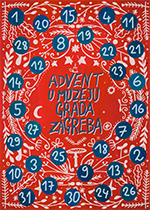Over-populated with its new inhabitants, pounded by the waves of the many newcomers after World War I, Zagreb with its doubled population went through a great crisis. During the twenties the city government carried out a programme of welfare housing. As in Vienna, houses with small flats were built in some fifteen locations all over the city.
At the beginning of the 1920s new regulations were passed to allow for the building of great city blocks, mainly to the east of today’s Trg hrvatskih velikana. The “International Style” and superb quality are the features of modern Zagreb architecture in this period. The city’s mayor, the architect Vjekoslav Heinzel, one of the most popular of the mayors of Zagreb, is mainly to be credited with the great surge in building at this time.
Big capital and industry were concentrated in the city, and Zagreb became the leading commercial and transport centre of the new state. In an endeavour to keep up its links with the world, Zagreb sent out big international tender invitations for the building of the Hotel Esplanade, the Jewish Hospital, the Foundation and Clinical Hospital and the General Regulatory Basis of the city in line with the new town-planning thinking of the time.
Enormous social contrasts were to be seen in the streets, in the centre of town, and in the appearance of the town as a whole. The rich built modern family villas on the hills at the edge of the town, and the poor lived in Trnje, in shacks and mud, without water or electricity. On the approaches to the town to the west and east the suburbs of Kustošija and Dubrava came into being. This situation made young artists come together in the Zemlja group, focussing their activities on the function of art, adopting a combative stance towards the society. In their thematic exhibitions called Country and town and House and life, the architects drew attention to the problems of housing and the standard of living.
Life in Zagreb between the wars had the charms of an interesting and civilised centre, with a good avant-garde theatre life, actors of world renown, automobile shows and diverse sporting events. In 1926 the first radio station started to work in Zagreb. The people of Zagreb were fond of going to the cabarets, where witty couplets were sung, ditties about various people and events. They danced at the brilliant balls in the Emerald Room of the elegant new hotel, the Esplanade, or more modestly at Đuro Tucić’s in Sokolana.
In summer they enjoyed frequent bathing at the City Bathing Place arranged along the clean greeny-blue Sava.
Nada Premerl

